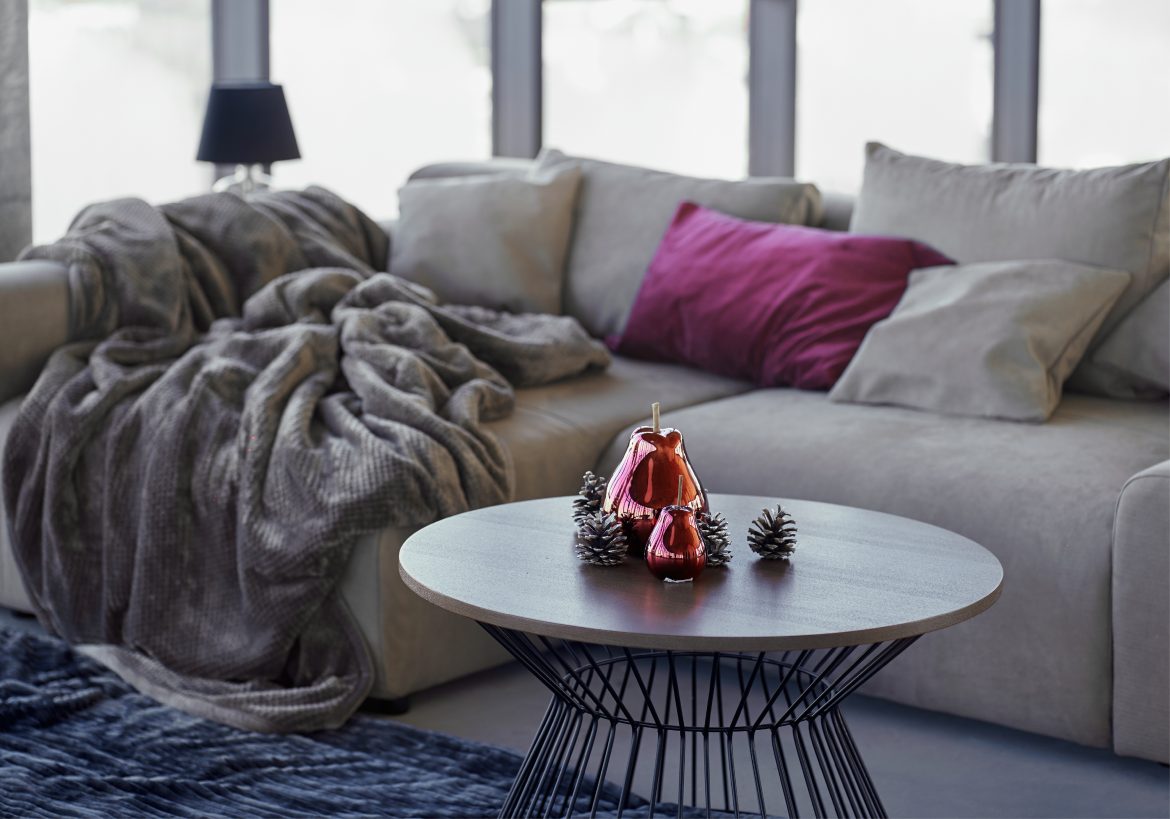Designing a living room that is both cozy and roomy can be a delicate balancing act. You want the space to welcome you in and feel warm and inviting, yet also open and airy, without feeling cramped or cluttered. The secret to pulling this balance off depends on how you choose and place your furniture. In this blog, we'll explore practical tips and expert advice on picking the right furniture pieces to transform your living room into a welcoming sanctuary that maximizes space without sacrificing comfort.
Understanding the Balance: Cozy vs. Spacious

Before diving into furniture choices, it's important to understand what “cozy” and “spacious” mean in the context of interior design:
Cozy conveys warmth, comfort, and closeness. It's about designing a space that's inviting and calm, usually by means of soft materials, warm tones, and furniture that invites lounging.
Spacious indicates openness, freedom of movement, and airiness. It's about keeping the space clear of clutter and employing design features that create a sense of enlarged space rather than the actual one.
The task is to mix these qualities so your living room doesn't look either too packed or too empty.
Step 1: Measure Your Space Accurately
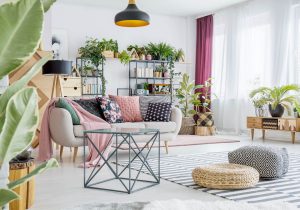
Take precise measurements of your living room before buying anything. Having the exact measurements prevents you from purchasing furniture that is too big or too small.
Measure the length, width, and height of the room.
Identify the positions of doors, windows, radiators, and electrical outlets.
Think about traffic flow — where individuals will be walking and how they will be navigating through the room.
Having these measurements at your fingertips will help you choose furniture that will fit nicely without overfilling.
Step 2: Select Multi-Functional Furniture

One of the brightest solutions for making the most of available space without sacrificing comfort is to spend money on multi-functional Furniture. These items have more than one use, cutting down on how much stuff is required in the room.
Sofa beds or sleeper sofas: Ideal for small living rooms, they offer seating during the day and a bed at night.
Storage ottomans: They provide a spot for resting your feet, additional seating, and secret storage for blankets, magazines, or toys.
Nesting tables: These can be nested together to conserve space or be split apart when you require more worktop space.
Coffee tables with storage: Consider tables with drawers or shelves at the bottom to stash clutter from view.
Multi-functional Furniture organizes your living room to be neat, spacious, yet warm and welcoming.
Step 3: Choose Furniture with Legs
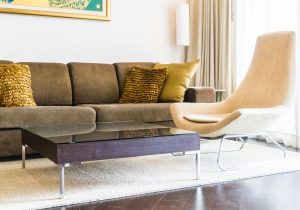
Floor-sitting Furniture can encumber a room and make it feel cramped. Instead, opt for pieces that have legs to push them off the floor.
Raised sofas, chairs, and tables give the room a feeling of openness due to open space underneath through which light and air may pass.
This design feature makes the floor visible, which makes the room look larger.
Use slender, tapered legs for a sleek look or wooden legs for a warm, traditional feel.
This little detail can make a big difference to the spaciousness of your living room.
Step 4: Select Light-Colored and Neutral Furniture
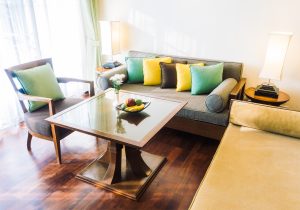
Hue has a great influence on the sensation of spaciousness or warmth in a room. Light colors bend light, making a room feel bigger and more airy.
Select sofas, chairs, and rugs in pale neutrals such as beige, cream, pale gray, or pastels.
Utilize touches of color in cushions, throws, or paintings to contribute warmth and character without overwhelming the space.
Avoid very dark or heavy-colored Furniture, which can make a room feel smaller and more enclosed.
Neutral Furniture creates a calm backdrop that invites relaxation while enhancing the perception of space.
Step 5: Prioritize Comfortable, Scaled-Down Seating

Comfort is key to coziness, but oversized Furniture can dominate a small living room and reduce usable space.
Look for sofas and chairs with a smaller footprint but plush cushions.
Opt for loveseats or small apartment-sized sofas over bigger sectional sofas.
Insert a couple of comfortable armchairs or a tiny loveseat to produce a seating area without overstuffing the room.
Introduce throw pillows and cozy blankets to raise comfort and heat.
Selecting Furniture of the right size makes your living room comfortable without being cramped.
Step 6: Add Mirrors and Reflective Surfaces

Mirrors are a timeless design technique that creates a space that looks bigger and brighter.
Place a large mirror across from a window to reflect light and create the illusion of space.
Place Furniture with glass or mirrored finishes, such as coffee tables or side tables, to reflect light throughout the room.
Reflective surfaces introduce a level of sophistication and assist in keeping a light, airy atmosphere.
Mirrors and reflective surfaces add to the airy feel while complementing your snug décor.
Step 7: Define Zones with Rugs
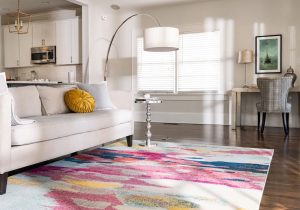
In an open-plan or large living room, rugs can define cozy “zones” without making the space feel claustrophobic.
Select a rug that corresponds to the size of your seating space to root the Furniture and generate a feeling of closeness.
Select light-colored or patterned rugs that provide texture and heat.
Steer clear of rugs that are too small or too big; the perfectly proportioned rug keeps the room and furniture arrangement balanced.
Rugs provide softness on the floor and at sight divide the room, giving it the sense of both coziness and orderliness.
Step 8: Keep Furniture Arrangement Open and Functional

Arranging your Furniture has an influence on how roomy and warm your living room is.
Don't push all Furniture against the walls; float some pieces in the room to create natural circulation paths.
Leave adequate space between Furniture for effortless movement — at least 18 to 24 inches between seating and tables.
Place seating to promote conversation and connection, like facing chairs and sofas toward each other.
Take advantage of corner spaces with small chairs or shelving units to prevent dead space.
An open, considered design increases flow and coziness, making your living room look welcoming and spacious.
Step 9: Add Soft Textiles and Warm Lighting
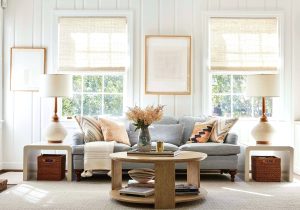
Lastly, to maximize coziness while not losing space, pay attention to textures and lighting.
Add soft textiles such as cushions, throws, and curtains to give it warmth and tactile coziness.
Employ warm-hued LED bulbs and multiple sources of light — floor lamps, table lamps, and sconces — to provide a warm, welcoming glow.
Refrain from harsh overhead lighting that makes the room cold and uninviting.
Soft textures and warm lighting round out the cozy atmosphere without compromising on space.
Bonus Tips: Declutter and Personalize
Clear surfaces of clutter and refrain from too many knick-knacks that fill the space.
Employ fashionable storage units such as baskets or shelves to hold items.
Add a few significant décor pieces that show your personality without cluttering the room.
A clean, tailored living room looks cozy yet expansive because it's practical and displays your personality.
Best Sites to Buy Furniture for your living room from:
Ashley Furniture
Pottery Barn
IKEA
Wayfair
These are our favorite brands to choose from but if we talk about one brand that gives us the best items of quality then Ashley Furniture is the king for us. But make sure to check out and explore your options from the mentioned heroes, which one is your favorite.
Conclusion
Choosing furniture that will give your living room a comfortable, expansive feel is a matter of balance and intelligent choices. Take measurements, select multi-functional, compact pieces, prefer light hues and raised seating, and strategically plan your layout. Incorporate soft textiles, warm glows, and reflective materials to provide warmth and spaciousness. With these simple tips, you can design a living room that beckons relaxation and togetherness while being bright, airy, and expansive.
Shop Now